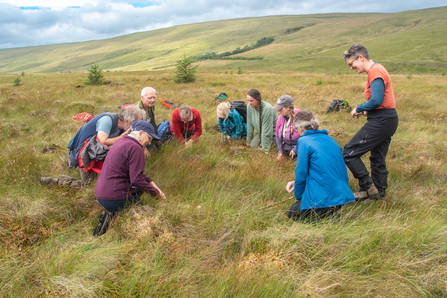
Upland Vegetation ID Training - Sara Spillett
Sphagnum moss - Sara Spillett

Upland Vegetation ID Training - Sara Spillett
As soon as I spotted the Upland Flora Identification Training in the Spring–Summer Volunteer Programme 2025, I fired off an email to book a place. I'm always eager to brush up on my plant ID skills!
At the time, July felt ages away—but, as ever, it came around swiftly. I joined nine other Yorkshire Wildlife Trust volunteers at Nethergill Farm, a sustainable wildlife haven at the head of Upper Wharfedale in the Yorkshire Dales. The farm hosts school groups, university students, and societies, and our hosts from Yorkshire Peat Partnership.
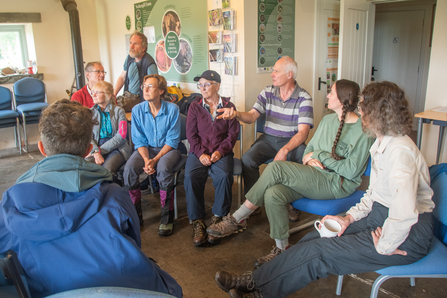
Upland Vegetation ID Volunteer Training - Sara Spillett
A Crash Course in Bogs
Our trainer for the day was Beth Thomas (Data and Evidence Manager at Yorkshire Peat Partnership). She started with a quick but fascinating overview of peatlands. Did you know there are three types of bogs in the UK—lowland raised bogs, fens, and blanket bogs?
When in good condition, bogs provide vital ecosystem services: they support biodiversity, improve water quality, store carbon, and help manage floodwaters. Yorkshire alone holds 25% of England’s blanket bog, though a shocking 80% of the UK’s bogs are damaged. Thankfully, there's good news too—over the past 15 years, the Yorkshire Peat Partnership has brought half of Yorkshire’s blanket bogs, including Nethergill, into restoration.
Our task for the day was to learn to identify flora and then survey a section of blanket bog. So after a safety briefing and donning boots, Beth led us up onto the fell.
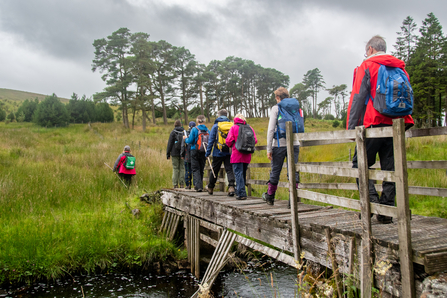
The volunteers make their way to site through picturesque scenery - Sara Spillett
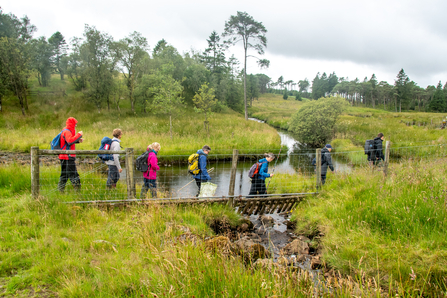
Volunteers walking over the bridge heading to the training site - Sara Spillett
We paused at the bog’s edge to focus on moss identification. It takes patience, a hand lens, and a keen eye, as well as good species key. Beth explained that bogs host relatively few plant species, so it’s an ideal place to sharpen your ID skills.
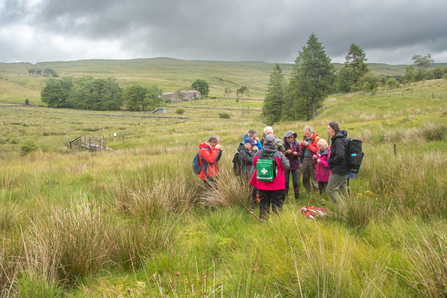
Time to start brushing up on those ID'ing skills - Sara Spillett
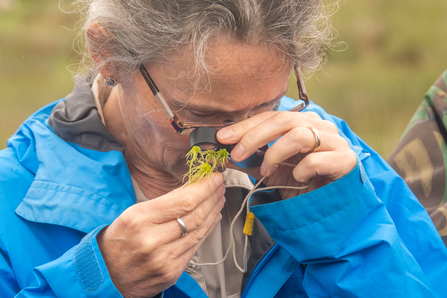
Upland Vegetation ID Training - Sara Spillett
As we climbed up the fellside, we passed areas of restored bog where drains had been blocked with leaky stone dams to slow water runoff. With Beth’s guidance, we gradually learned to identify a whole range of flora—mosses, sedges, rushes, grasses, dwarf shrubs, and flowers. The names were magical, including: lustrous bog-moss, star moss, sundew, bog asphodel, wavy hair-grass, and hare’s-tail cotton grass.
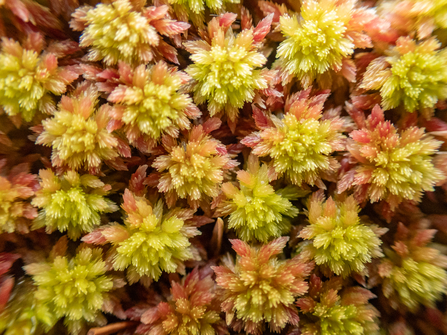
Sphagnum moss - Sara Spillett
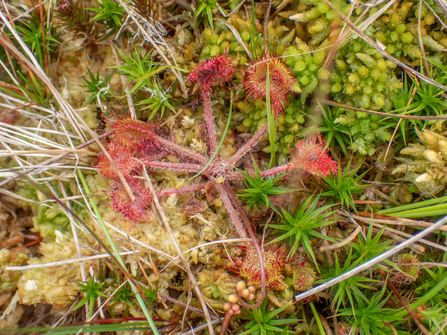
Sundew - Sara Spillett
We ate our sandwich lunch whilst admiring the stunning views over Nethergill Farm and the surrounding Upper Wharfedale landscape.
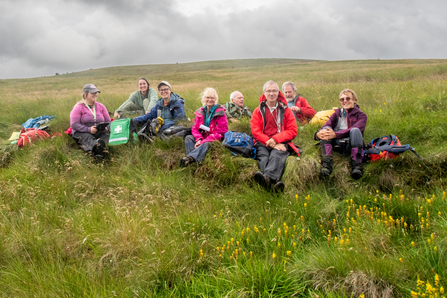
A well earned lunch - Sara Spillett
Hands-On Surveying
After lunch, it was time to put our new skills to the test. Beth guided us through a vegetation survey. We started by walking across a 10m² sample plot, estimating the percentage of different plant types.
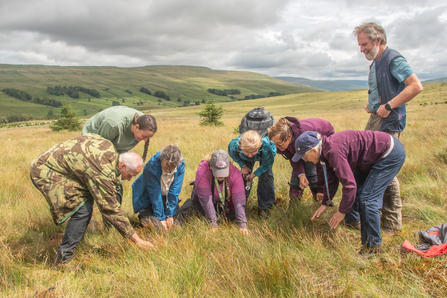
Upland Vegetation ID Training - Sara Spillett
Next came the real detail: a 2m² plot, where we got down on hands and knees to scrutinise species presence and distribution. The closer we looked, the more we found—and by now, many volunteers were impressively confident in their identifications. That said, it still took us quite some time to agree on what we were seeing. One of my favourite quotes of the day was, fittingly: "Time is a very fluid concept on a bog."
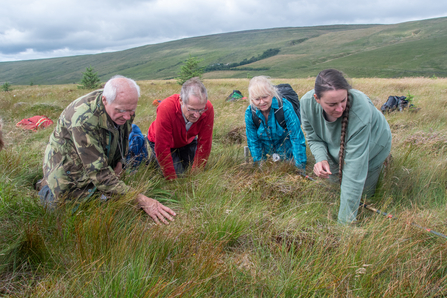
Upland Vegetation ID Training - Sara Spillett
Monitoring the Bog
Once our survey was complete, Beth showed us other monitoring techniques used on the site: dip wells and data loggers(measuring water depth in the peat), rain gauges, sediment traps, camera traps, and passive audio recorders. I suspect one of those camera traps caught a snap of me peering far too closely at it, before I realised what it was!
A Day to Remember
All too soon, it was time to return to the field centre. As we walked, I learned that booking early had been essential—the session was fully booked, with a waiting list.
It was a full and rewarding day, packed with hands-on learning. I’d highly recommend a future training day to anyone interested in plant ID, peatland restoration, or just spending a day immersed in the wonders of an upland bog.
Want to help?
The vast majority of our restoration work is carried out by specialist contractors; it's hard manual labour, in remote locations and usually in the coldest, wettest months. It's difficult for us to safely offer volunteering opportunities in these circumstances.
We do have opportunities, however, in our monitoring work, specifically through our Eyes on the Bog programme. This provides a scientifically robust, repeatable, low tech, long-term monitoring initiative, using methodology created by the IUCN UK Peatland Programme. This standardised methodology enables individual peatland sites to be consistently monitored across the UK, creating a network of comparable sites.
We welcome volunteers - individually or in small groups - prepared to take on monitoring for specific sites across our operational area. We'll provide the equipment; you'll need to be happy on difficult terrain and able to get yourself there. If you'd like to find out more, please get in touch via the Yorkshire Wildlife Trust volunteering contact form.
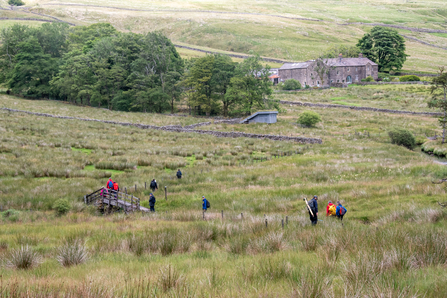
Time to head home - Sara Spillett